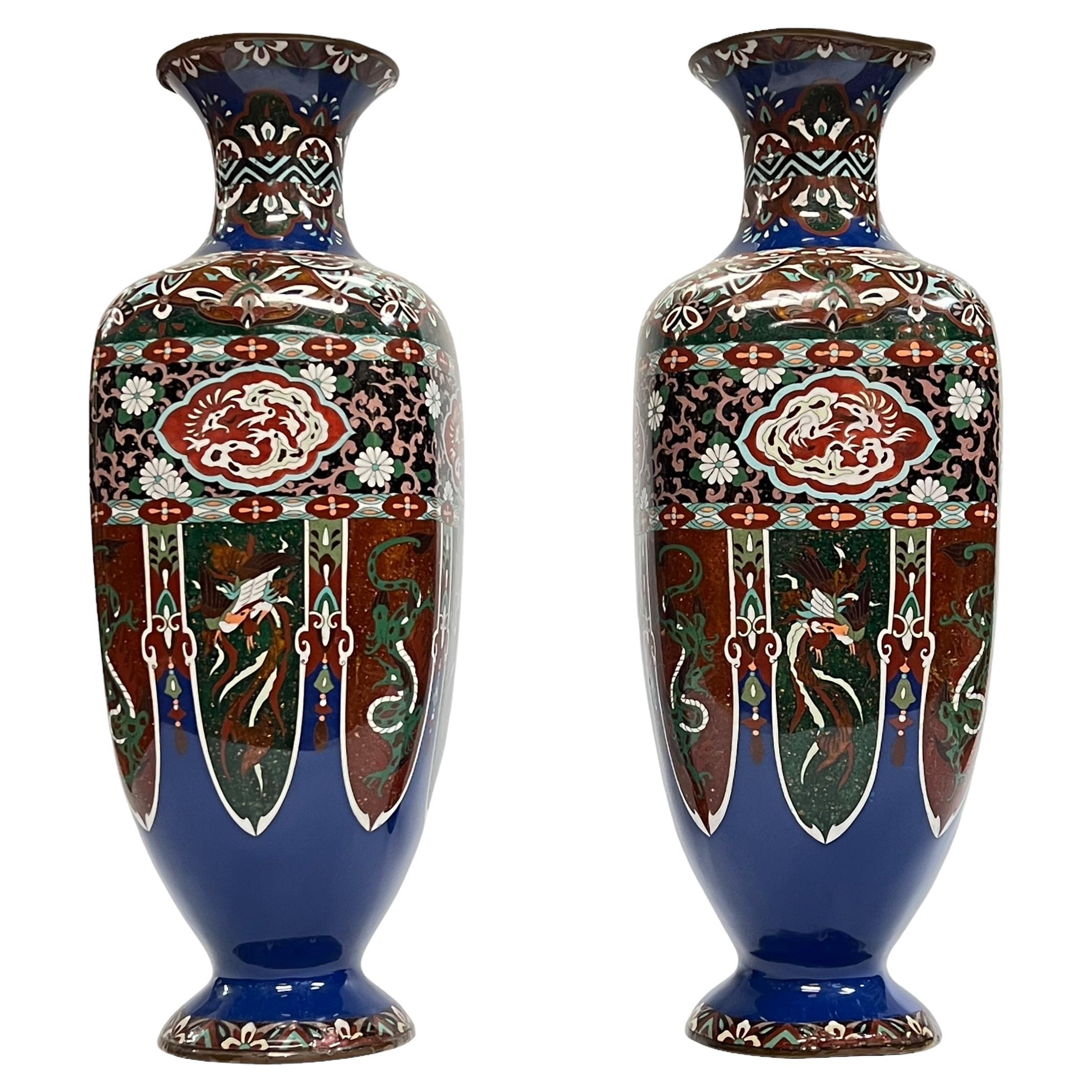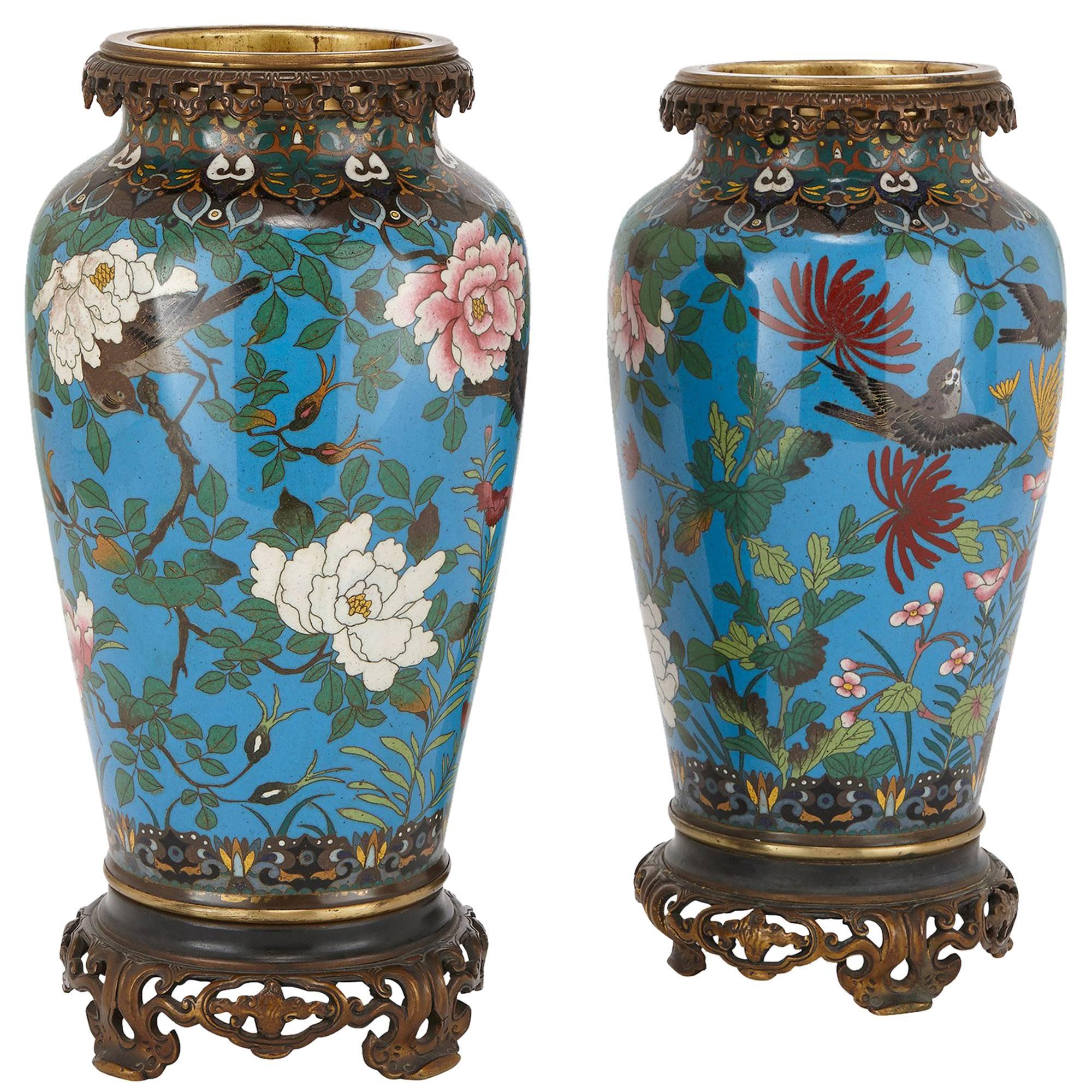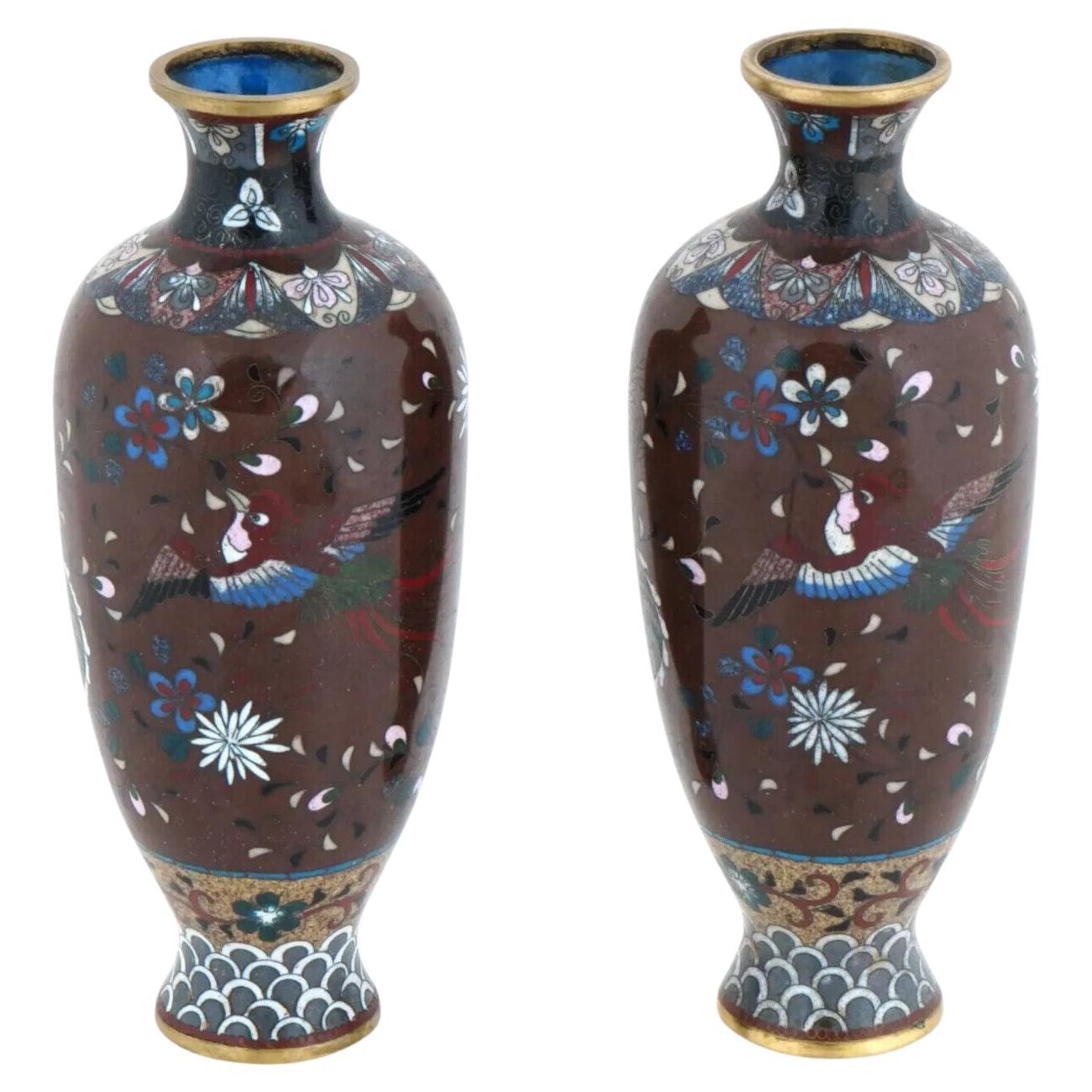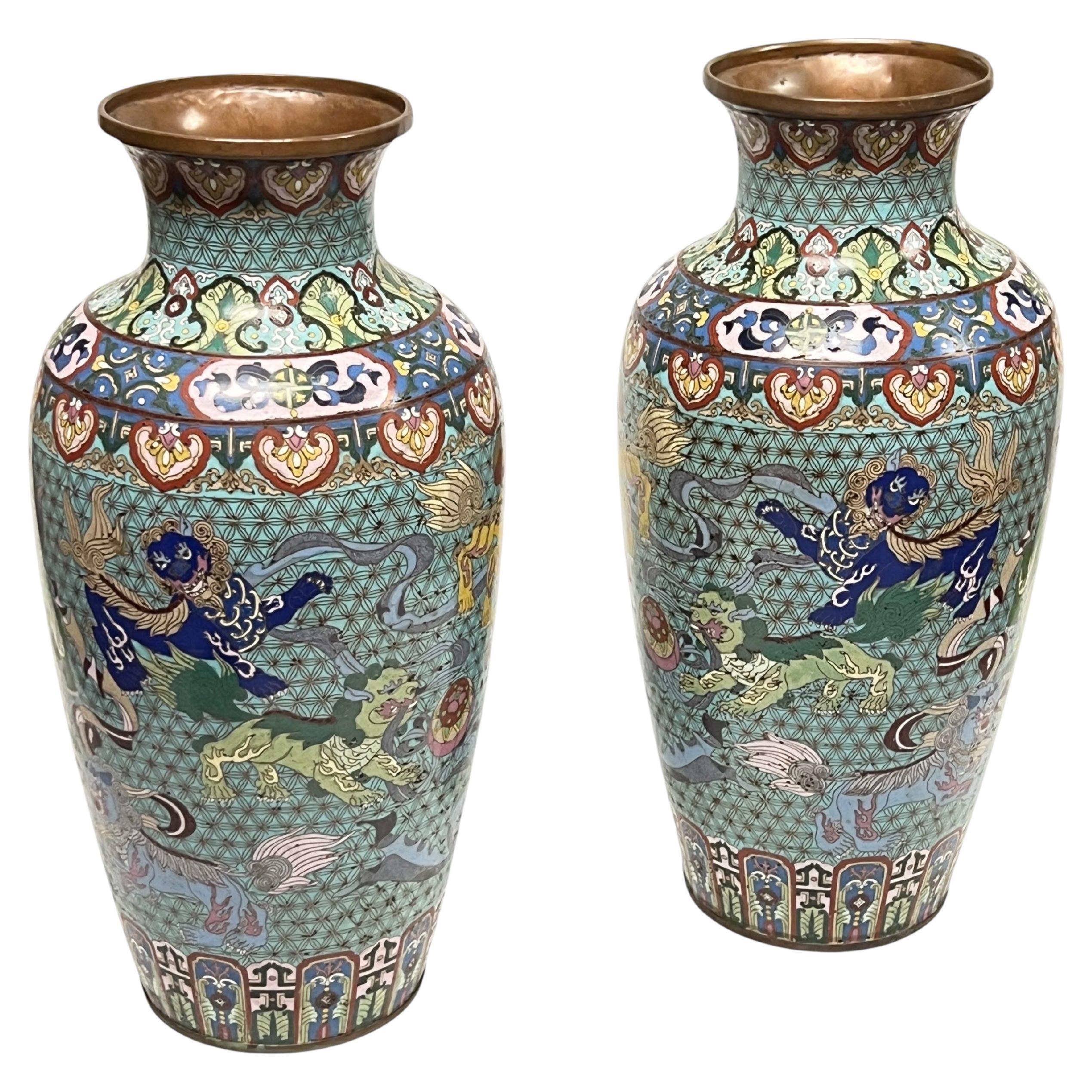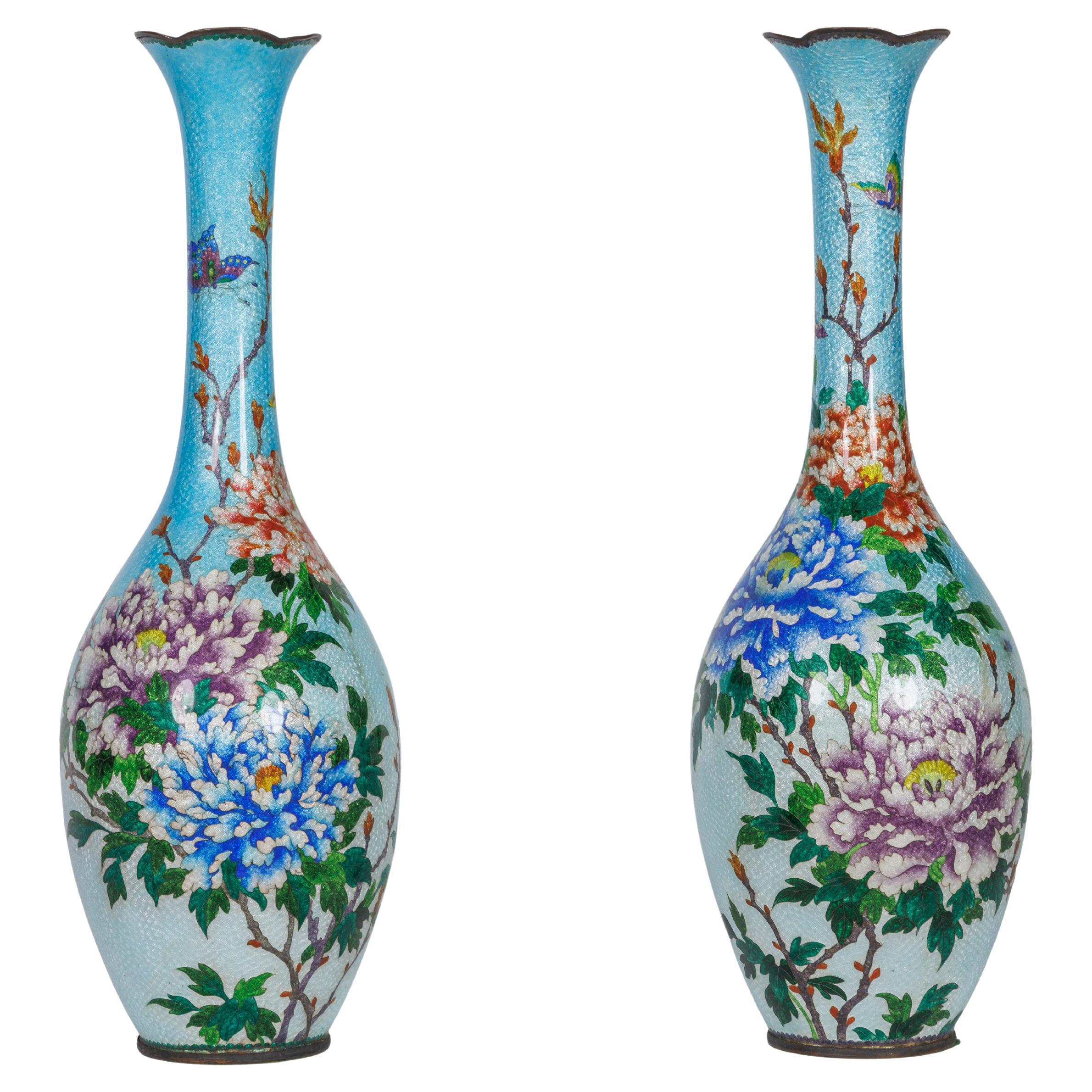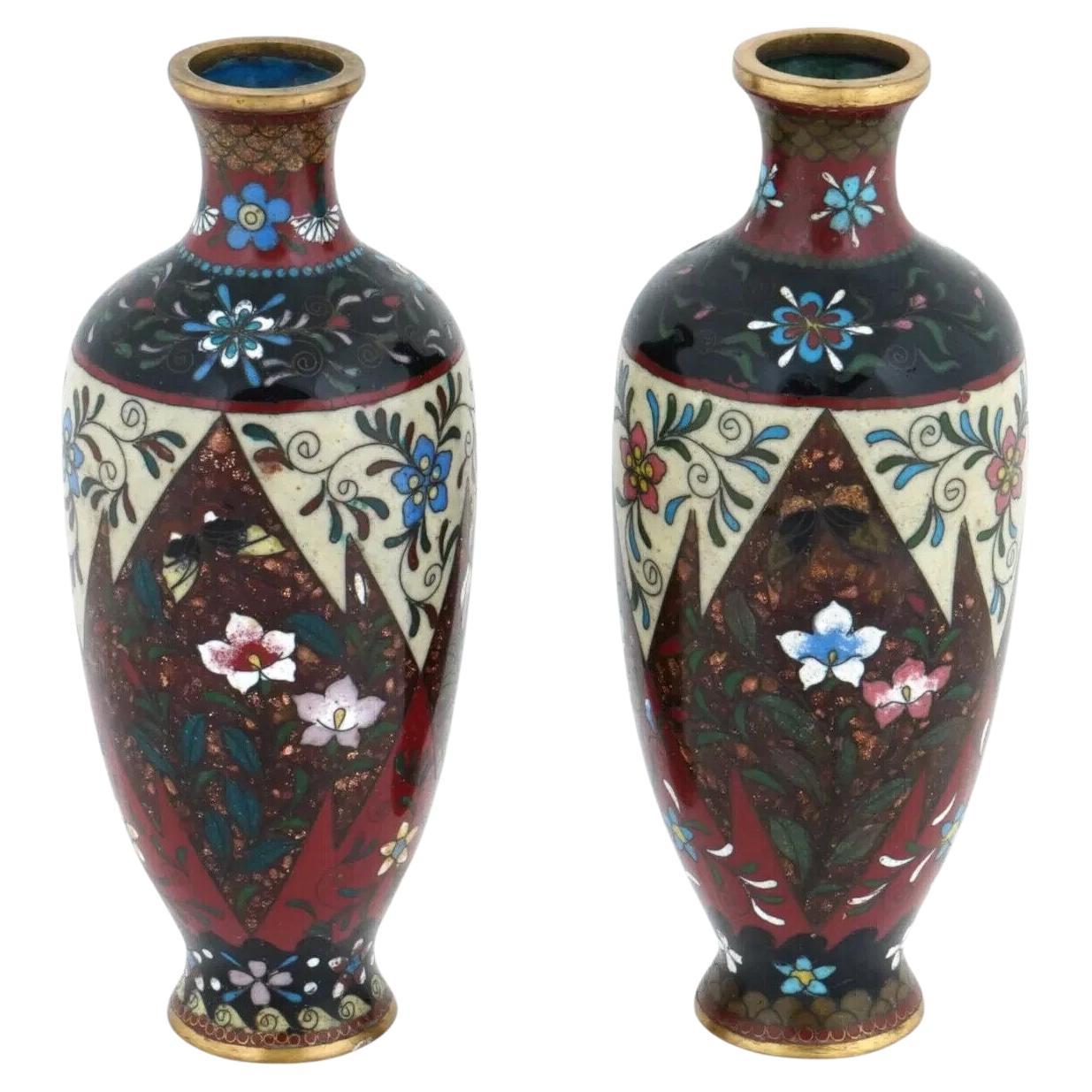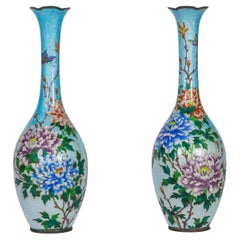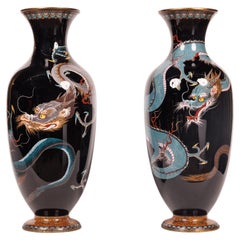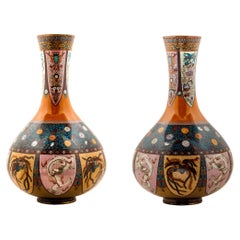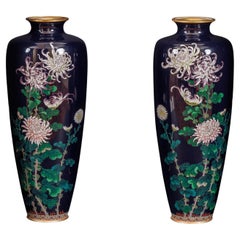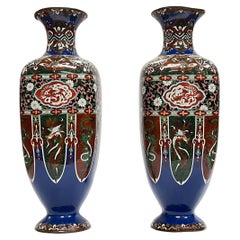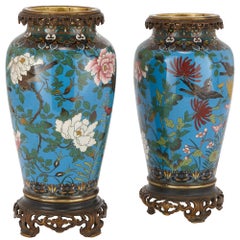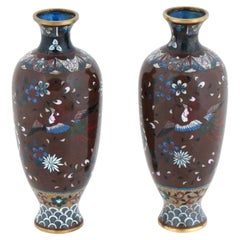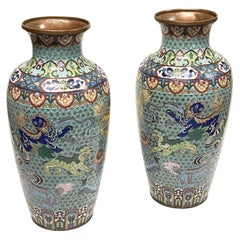Items Similar to Large Pair of Meiji Period Japanese Cloisonne Enamel Vases Attributed to Goto
Want more images or videos?
Request additional images or videos from the seller
1 of 20
Large Pair of Meiji Period Japanese Cloisonne Enamel Vases Attributed to Goto
$35,000
£26,564.48
€30,617.75
CA$49,049.84
A$54,743.84
CHF 28,801.51
MX$664,986.58
NOK 365,126.50
SEK 341,712.65
DKK 228,510.99
About the Item
A large pair of Meiji Period Japanese cloisonne enamel vases attributed to Goto Seizaburo, 19th century.
These vases were made during the Meiji period (1868-1912) in Japan and are characterized by their blue enamel background with intricate designs of flowers, birds (including pigeons), butterflies and landscapes.
The use of blue enamel as a background creates a striking contrast with the colorful designs, making these vases particularly visually appealing which are appreciated for their beauty, craftsmanship, and cultural significance.
Goto Seizaburo (1852-1914) was a renowned Japanese cloisonne enamel artist who lived and worked during the Meiji period (1868-1912). He was born in Nagoya and started his career as an apprentice to a local cloisonne enamel artist. He later moved to Tokyo and began working for the Ando Cloisonne Company.
Goto Seizaburo was known for his exceptional skill and attention to detail in cloisonne enamel. He developed new techniques, including the use of transparent enamel, and created intricate designs that often featured flowers, birds, and other natural elements.
His works were highly sought after by collectors and were exhibited at international exhibitions, including the Paris Universal Exposition in 1900, where he won a Gold Medal. He also received numerous awards and honors in Japan for his contributions to the art of cloisonne enamel.
Today, Goto Seizaburo is considered one of the most important cloisonne enamel artists of the Meiji period, and his works continue to be highly valued and collected by art enthusiasts and collectors around the world.
Good condition overall, no damaged noted. A minor flake to the enamel in one area.
Measures : 18.5" high x 9" diameter.
- Dimensions:Height: 18.5 in (46.99 cm)Diameter: 9 in (22.86 cm)
- Style:Meiji (Of the Period)
- Materials and Techniques:
- Place of Origin:
- Period:
- Date of Manufacture:19th Century
- Condition:Wear consistent with age and use.
- Seller Location:Queens, NY
- Reference Number:1stDibs: LU1798233534832
About the Seller
5.0
Vetted Professional Seller
Every seller passes strict standards for authenticity and reliability
Established in 1980
1stDibs seller since 2016
63 sales on 1stDibs
Typical response time: 6 hours
- ShippingRetrieving quote...Shipping from: Queens, NY
- Return Policy
Authenticity Guarantee
In the unlikely event there’s an issue with an item’s authenticity, contact us within 1 year for a full refund. DetailsMoney-Back Guarantee
If your item is not as described, is damaged in transit, or does not arrive, contact us within 7 days for a full refund. Details24-Hour Cancellation
You have a 24-hour grace period in which to reconsider your purchase, with no questions asked.Vetted Professional Sellers
Our world-class sellers must adhere to strict standards for service and quality, maintaining the integrity of our listings.Price-Match Guarantee
If you find that a seller listed the same item for a lower price elsewhere, we’ll match it.Trusted Global Delivery
Our best-in-class carrier network provides specialized shipping options worldwide, including custom delivery.More From This Seller
View AllAn Exquisite and Large Pair of Meiji Japanese Ginbari Cloisonne Enamel Vases
Located in Queens, NY
An Exquisite and Large Pair of Meiji Japanese Ginbari Cloisonné Enamel Vases with Peonies and Butterflies
This stunning pair of vases, crafted during the Meiji period (1868-1912), s...
Category
Antique 19th Century Japanese Meiji Vases
Materials
Enamel
Large Pair of Meiji Period Japanese Cloisonne Enamel Double Dragon Vases
Located in Queens, NY
A large pair of Meiji Period Japanese Cloisonne Enamel Double Dragon Vases, 19th century.
Japanese cloisonne enamel dragon vases are highly ...
Category
Antique 19th Century Japanese Meiji Metalwork
Materials
Copper, Enamel
Large Pair of Japanese Cloisonne Enamel Vases Attributed to Honda Yasaburo
Located in Queens, NY
A large pair of Japanese Cloisonne Enamel vases attributed to Honda Yasaburo, 19th century.
Finley decorated with the rich enamel colors of orange and green, these vases are desig...
Category
Antique 19th Century Japanese Meiji Metalwork
Materials
Copper, Enamel
An Exquisite Pair Of Japanese Cloisonné Enamel Vases with Chrysanthemum Blossoms
Located in Queens, NY
An Exquisite Pair Of Japanese Cloisonné Enamel Vases with Chrysanthemum Blossoms, Attributed to Hayashi, Meiji Period.
Experience the exquisite craftsmanship of the Meiji period wit...
Category
Antique 19th Century Japanese Meiji Metalwork
Materials
Enamel
A Large Pair of Japanese Cloisonne Pink-Ground Vases Featuring Sunset and Cranes
Located in Queens, NY
Presenting a truly captivating and highly collectible pair of Meiji Period Japanese Cloisonné Enamel Pink-Ground Vases, attributed to the renowned artist Hayashi Kodenji. These excep...
Category
Antique 19th Century Japanese Meiji Vases
Materials
Enamel
An Exquisite Quality Meiji Period Japanese Cloisonne Enamel Bud Vase
Located in Queens, NY
Presenting a truly remarkable piece, this large exquisite quality cobalt ground Meiji Period Japanese cloisonne Enamel Bud Vase. This magnificent artwork embodies the timeless beauty...
Category
Antique 19th Century Japanese Meiji Vases
Materials
Enamel
You May Also Like
Pair Large Japanese Cloisonne Enamel Metal Vases
Located in New York, NY
Pair of brilliant blue Japanese Meiji period cloisonne enamel metal vases with rounded square shape. Each 24 by 8 1/2 by 10 inches.
Category
Antique 19th Century Japanese Metalwork
Materials
Metal
$4,500 / item
Pair of Antique Japanese Ormolu Mounted Cloisonné Enamel Vases
Located in London, GB
Of ovoid form with a pierced ormolu rim, decorated throughout with birds, flowers and foliage, raised on pierced ormolu feet; the enamel Japanese, the ormolu French, late 19th centur...
Category
Antique Late 19th Century Japanese Meiji Vases
Materials
Bronze, Enamel
Antique Pair Of Meiji Japanese Cloisonne Enamel Vases
Located in Long Island City, NY
A pair of identical antique Japanese copper vases with cloisonne enamel design. Late Meiji period, before 1912. Elongated baluster shape with pronounced neck. Floral ornament with bl...
Category
Antique Late 19th Century Japanese Meiji Metalwork
Materials
Enamel, Copper
Pair Exceptional Antique Japanese Meiji Period Cloisonne Enameled Metal Vases
Located in New York, NY
Pair of exceptional antique (late 19th century) Meiji period Japanese metal vases with fine cloisonne enameled designs of guardian lions and dragons. Each 20 1/4 inches tall and 9 i...
Category
Antique Late 19th Century Japanese Meiji Metalwork
Materials
Metal
Antique Pair Of Meiji Japanese Cloisonne Enamel Vases
Located in Long Island City, NY
A pair of identical antique Japanese copper vases with cloisonne enamel design. Late Meiji period, before 1912. Elongated baluster shape with pronounced neck. Floral ornament against...
Category
Antique Late 19th Century Japanese Meiji Metalwork
Materials
Copper, Enamel
Pair of Antique Meiji Period Japanese Cloisonne Enamel Vases
Located in London, GB
These beautiful Japanese vases were crafted during the Meiji period of the late 19th Century, which was referred to as the Golden Age of cloisonne enameling.
The vases are of elo...
Category
Antique Late 19th Century Japanese Meiji Vases
Materials
Enamel
More Ways To Browse
Antique Japanese Cloisonne
Antique Furniture Tokyo
Copper Butterfly
Blue Bird Furniture Company
Tokyo Japan Vase
Pigeon Vase
Ando Cloisonne
Ando Cloisonne Vase
Meiji Okimono
Meiji Bronze Dragon
Indo Persian Art
Antique Copper Charger
Islamic Brass Tray
Japanese Bronze Incense
Mughal Copper
Japanese Censer
Chinese Archaic Bronze
Bronze Okimonos
